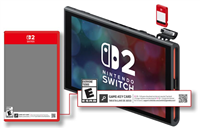在html5和css中,定位(positioning)是控制元素在页面上位置的重要机制。主要有四种定位方式:静态定位(static)、相对定位(relative)、绝对定位(absolute)和固定定位(fixed)。下面我将详细讲解这三种非静态定位方式,并提供相应的源代码示例。
1. 相对定位 (relative positioning)
特点:
- 元素相对于其正常位置进行偏移
- 不会脱离文档流,原来的空间仍然保留
- 使用 top、right、bottom、left 属性进行定位
- 常用于微调元素位置或作为绝对定位元素的参照
<!doctype html>
<html>
<head>
<style>
.relative-box {
position: relative;
left: 50px;
top: 20px;
width: 200px;
height: 100px;
background-color: lightblue;
border: 2px solid blue;
}
</style>
</head>
<body>
<h2>相对定位示例</h2>
<p>这是一个普通段落。</p>
<div class="relative-box">这个div使用了相对定位,向右移动50px,向下移动20px。</div>
<p>注意相对定位元素原来的空间仍然保留。</p>
</body>
</html>2. 绝对定位 (absolute positioning)
特点:
- 元素相对于最近的已定位祖先元素(非static)进行定位
- 如果没有已定位祖先,则相对于初始包含块(通常是html元素)
- 完全脱离文档流,不占据空间
- 使用 top、right、bottom、left 属性进行精确定位
- 常用于创建浮动元素、对话框等
<!doctype html>
<html>
<head>
<style>
.container {
position: relative;
width: 400px;
height: 200px;
background-color: #f0f0f0;
border: 2px solid gray;
}
.absolute-box {
position: absolute;
right: 20px;
bottom: 10px;
width: 150px;
height: 80px;
background-color: lightcoral;
border: 2px solid red;
}
</style>
</head>
<body>
<h2>绝对定位示例</h2>
<div class="container">
这是一个相对定位的容器
<div class="absolute-box">这个div使用了绝对定位,相对于容器定位在右下角。</div>
</div>
</body>
</html>3. 固定定位 (fixed positioning)
特点:
- 元素相对于浏览器窗口进行定位
- 不随页面滚动而移动
- 完全脱离文档流
- 常用于导航栏、返回顶部按钮等需要固定在屏幕某处的元素
<!doctype html>
<html>
<head>
<style>
.fixed-box {
position: fixed;
right: 20px;
bottom: 20px;
width: 100px;
height: 50px;
background-color: lightgreen;
border: 2px solid green;
text-align: center;
line-height: 50px;
}
</style>
</head>
<body>
<h2>固定定位示例</h2>
<p>向下滚动页面,右下角的按钮会固定在相同位置。</p>
<div style="height: 2000px;">很多内容...</div>
<div class="fixed-box">固定按钮</div>
</body>
</html>三种定位方式的主要区别
| 特性 | 相对定位 (relative) | 绝对定位 (absolute) | 固定定位 (fixed) |
|---|---|---|---|
| 参照物 | 自身原始位置 | 最近的已定位祖先 | 浏览器窗口 |
| 文档流 | 保留原空间 | 脱离文档流 | 脱离文档流 |
| 滚动影响 | 随页面滚动 | 随祖先元素滚动 | 不随页面滚动 |
| 常见用途 | 微调元素位置、作为定位上下文 | 弹出层、浮动元素 | 导航栏、固定按钮 |
| z-index | 可应用 | 可应用 | 可应用 |
<!doctype html>
<html>
<head>
<style>
body {
font-family: arial, sans-serif;
margin: 0;
padding: 20px;
}
.container {
position: relative;
width: 80%;
height: 300px;
margin: 30px auto;
background-color: #f5f5f5;
border: 2px dashed #333;
padding: 20px;
}
.relative-box {
position: relative;
left: 50px;
top: 20px;
width: 200px;
height: 100px;
background-color: rgba(173, 216, 230, 0.7);
border: 2px solid blue;
}
.absolute-box {
position: absolute;
right: 30px;
top: 50px;
width: 150px;
height: 80px;
background-color: rgba(240, 128, 128, 0.7);
border: 2px solid red;
}
.fixed-box {
position: fixed;
left: 20px;
top: 20px;
width: 120px;
height: 60px;
background-color: rgba(144, 238, 144, 0.7);
border: 2px solid green;
text-align: center;
line-height: 60px;
}
.sticky-box {
position: sticky;
top: 10px;
width: 100%;
height: 50px;
background-color: rgba(255, 255, 0, 0.7);
border: 2px solid orange;
text-align: center;
line-height: 50px;
margin-top: 20px;
}
.long-content {
height: 1500px;
margin-top: 30px;
padding: 20px;
background-color: #eee;
}
</style>
</head>
<body>
<div class="fixed-box">固定定位</div>
<h1>css定位方式演示</h1>
<div class="sticky-box">粘性定位(sticky)</div>
<div class="container">
<div class="relative-box">相对定位</div>
<div class="absolute-box">绝对定位</div>
<p>这是一个相对定位的容器,包含相对定位和绝对定位的元素。</p>
</div>
<div class="long-content">
<p>向下滚动页面,观察不同定位元素的行为...</p>
<p>固定定位元素始终在窗口固定位置。</p>
<p>粘性定位元素在到达指定位置时会粘住。</p>
</div>
</body>
</html>到此这篇关于html5 定位详解:相对定位、绝对定位和固定定位的文章就介绍到这了,更多相关html5相对定位、绝对定位和固定定位内容请搜索代码网以前的文章或继续浏览下面的相关文章,希望大家以后多多支持代码网!






发表评论